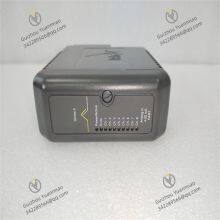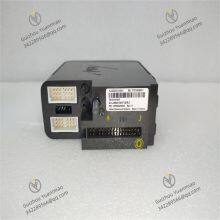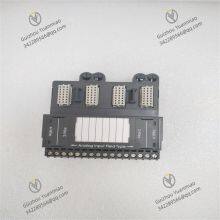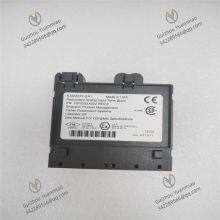Material
Other, Global universal model
Condition
Other, Global universal model
Task
Other, Global universal model
Mathematical Model
Other, Global universal model
Signal
Other, Global universal model
Customized
Non-Customized
Structure
Other, Global universal model
Operating temperature
-40°C to 70°C
Output voltage
24V DC(±10%)
Dimensions
165mm×100mm×30mm
I. Overview
Emerson VE4033S2B1 is an M-series digital input interface card in the DeltaV™ system, specifically designed for the accurate collection and transmission of on-site digital signals in the field of industrial automation. It can efficiently receive on-off signals from various switching devices (such as limit switches, proximity switches, pressure switches, buttons, etc.) and reliably transmit these signals to the DeltaV™ control system, providing key data support for the system to monitor discrete states in the production process.
With its high reliability, strong anti-interference ability and redundant design, this interface card is widely used in industries with extremely high requirements for production safety and continuity, such as chemical engineering, petroleum, electric power, and pharmaceuticals. It is an important part of building a stable industrial control network, ensuring that the control system can grasp the operating status of on-site equipment in real-time and respond to various abnormal situations in a timely manner.

II. Technical Parameters
Channel configuration: It has 16 independent digital input channels, each of which can work independently, and the channels adopt electrical isolation design, effectively avoiding mutual interference between signals and ensuring the accuracy and stability of signal collection.
Input signal type: Supports dry contact and wet contact (NPN/PNP type) input, compatible with signal output forms of various on-site switching devices, improving the versatility and compatibility of the equipment.
Electrical parameters: The input voltage range is 24V DC (±10%), meeting the standard power supply requirements of industrial sites; the input current of each channel is ≤5mA, with low power consumption, which can effectively save energy; the response time of the input signal is ≤1ms, which can quickly capture changes in on-site signals and ensure the real-time performance of data.
Isolation performance: Photoelectric isolation technology is adopted between each input channel and the system, with an isolation voltage of ≥2500V AC (for 1 minute), which has excellent anti-electromagnetic interference ability and can work stably in the complex electromagnetic environment of industrial sites (such as interference generated by motors, frequency converters and other equipment).
Redundancy capability: Supports 1:1 redundancy architecture. The main and standby cards can synchronize the working status in real-time. When the main card fails, the standby card can complete automatic switching within ≤50ms, and there is no data loss during the switching process, ensuring the continuity of signal collection and meeting the requirements for high system availability in key production links.
Power parameters: The working voltage is 24V DC (±10%), the typical power consumption of a single card is ≤5W, and the total power consumption in the redundant state is ≤10W. It is compatible with the standard power module of the DeltaV™ system, simplifying the power supply design of the system.
Environmental adaptability: The operating temperature range is -40°C to 70°C, which can operate normally in extremely low and high temperature environments; the storage temperature range is -40°C to 85°C, facilitating the transportation and storage of equipment; the relative humidity is 5%-95% (no condensation), and the protection level reaches IP20, which can adapt to harsh industrial environments such as humidity and dust.
Physical specifications: It adopts a DIN rail-compatible card design, with dimensions of 165mm×100mm×30mm (length × width × height) and a weight of about 220g. The structure is compact, saving installation space; it supports hot-swapping operation, facilitating online maintenance of the system and card replacement, reducing production downtime caused by maintenance.

III. Functional Features
High-density channel design: The high-density design of 16 input channels can collect digital signals from multiple on-site devices at the same time, reducing the number of interface cards used, lowering the system integration cost, and simplifying the wiring in the control cabinet.
Redundancy ensures continuous operation: Through the 1:1 redundancy design, the main and standby cards monitor and synchronize the working status in real-time. Once the main card fails, the standby card can quickly switch and take over the work, ensuring uninterrupted signal collection, greatly improving the reliability and availability of the system, and is suitable for scenarios with extremely high requirements for production continuity.
Wide compatibility signal reception: It supports multiple input types such as dry contacts and wet contacts, and can seamlessly connect with switching devices of different brands and models without additional signal conversion equipment, improving the flexibility and applicability of the system.
Enhanced anti-interference performance: The use of photoelectric isolation technology and hardware filtering circuits effectively suppresses interference signals such as electromagnetic interference and surges in industrial sites, reduces the probability of false signal collection, and ensures the accuracy of collected data.

Hot-swapping and convenient configuration: It supports hot-swapping function, allowing direct plugging and unplugging of cards for replacement or maintenance during system operation without stopping the control system, significantly reducing maintenance downtime; after being connected to the DeltaV™ system, it can be automatically recognized, and channel parameters can be configured through the system's configuration software, simplifying the installation and debugging process and improving work efficiency.
Comprehensive status diagnosis: The card has a built-in perfect status monitoring circuit, which can real-time monitor the working status of each input channel, power status, redundancy switching status and other information, and intuitively display the operating status of the equipment through LED indicators (such as power lights, communication lights, redundancy status lights, channel status lights). At the same time, fault information will be uploaded to the DeltaV™ control system in a timely manner, facilitating maintenance personnel to quickly locate and troubleshoot faults and shorten the fault handling time.
IV. Common Faults and Solutions
Abnormal input signal collection (no signal or false alarm)
Possible causes: The on-site equipment is not working normally, resulting in no signal output; the signal cable is broken, the connector is loose or in poor contact; the input signal voltage exceeds the specified range; the channel is subject to strong electromagnetic interference; the input channel has a hardware failure.
Solutions: Check the working status of on-site switching equipment to ensure that the equipment outputs signals normally; check the continuity of the signal cable, re-tighten the connector, and replace the damaged cable if necessary; use a multimeter to measure the input signal voltage to ensure it is within the range of 24V DC (±10%); keep the signal cable away from strong interference sources (such as motors, frequency converters), use shielded cables and ensure the shield is reliably grounded at one end; switch the signal to the standby channel, if the collection is normal, it is determined that the original channel has a hardware fault, and replace the interface card.

Abnormal redundancy switching (frequent switching or switching failure)
Possible causes: The synchronization clock deviation between the main and standby cards is too large; the communication cable is in poor contact or aging, resulting in abnormal status synchronization; the power supply voltage fluctuation exceeds the allowable range, affecting the normal operation of the card; the card has poor heat dissipation, and the high temperature triggers the protection mechanism.
Solutions: Calibrate the synchronization clock of the main and standby cards through the DeltaV™ engineer station; check the communication cable connection between the main and standby cards, replace the aging or poorly contacted cables to ensure smooth communication; use a multimeter to detect the power supply voltage, replace the power module with poor voltage regulation performance, and ensure the voltage is stable within the range of 24V DC (±10%); clean the dust on the surface of the card and the heat dissipation holes, improve the ventilation conditions of the control cabinet, and ensure that the working temperature of the card does not exceed 70°C.
The card cannot be recognized by the system
Possible causes: The card is not inserted into the slot correctly, resulting in poor contact of the gold fingers; the firmware version of the card is incompatible with the DeltaV™ system version; the power module is faulty, resulting in abnormal power supply to the card; the internal circuit of the card is damaged.
Solutions: Re-plug the card to ensure it is in close contact with the slot; upgrade the firmware of the card to a version compatible with the system through Emerson's official tools; check the output voltage of the power module and replace the faulty power module; if the above operations are ineffective, it is determined to be a hardware fault of the card, and replace it with a new interface card.
















































